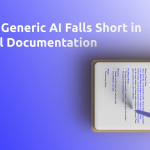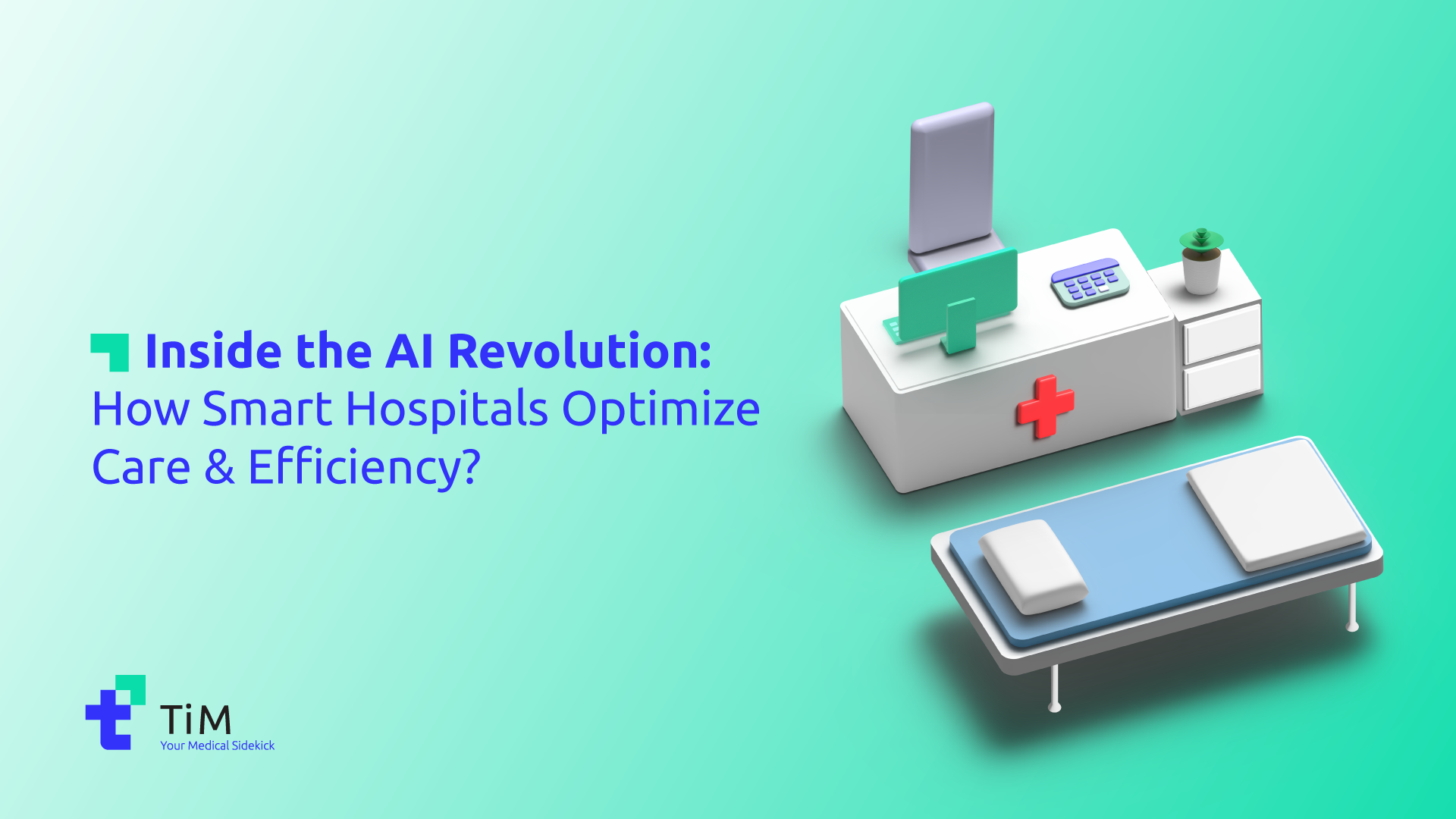
Predictive Oncology: What AI Means for Clinicians and Healthcare Leaders
October 7, 2025
Why Generic AI Falls Short in Clinical Documentation
October 30, 2025
How Leading Hospitals Are Using AI to Boost Efficiency and Patient Care
In recent years, artificial intelligence (AI) has begun transforming routine processes in healthcare, particularly by easing the administrative workload on clinicians. Health systems are increasingly turning to AI-powered tools for clinical documentation to get providers away from the computer and give them more face time with patients. This article highlights four prominent hospitals and health systems – Johns Hopkins Medicine, Kaiser Permanente, Duke Health, and Mayo Clinic – that have embraced AI for clinical documentation, and examines how this technology is improving efficiency and patient care in each organization.
Johns Hopkins Medicine: Enterprise-Wide AI Documentation
Johns Hopkins Medicine, a leading academic health system based in Baltimore, has deployed an ambient AI clinical documentation platform across its entire network of six hospitals, 40 outpatient centers, and 6,700 clinicians. The system uses a generative AI “digital scribe” to ambiently record doctor-patient visits and draft the clinical notes for the electronic health record (EHR). Clinicians review and approve the AI-generated notes before they are entered into the patient’s record, ensuring accuracy and oversight.
Hospital leaders expect the AI tool to significantly lighten physicians’ documentation load. “We’re excited for the opportunity to provide our clinicians with a tool to ease documentation burden,” said Dr. Manisha Loss, Associate CMIO at Johns Hopkins, emphasizing that the AI was designed by clinicians to capture the patient story in an authentic clinical voice. By automating repetitive note-taking tasks, the platform reduces distraction and allows doctors to focus more on what really matters: caring for patients. Johns Hopkins’s enterprise-wide adoption of AI for documentation aims to improve efficiency by streamlining workflows and giving clinicians more time for direct patient care.
Kaiser Permanente: Large-Scale Ambient AI Scribes Across 40 Hospitals
Kaiser Permanente – one of the nation’s largest integrated health systems – has launched what is described as the largest generative AI project in healthcare to date by rolling out an ambient AI scribe tool across its entire network of facilities. In August 2024, the Oakland-based system announced it had contracted with an AI startup to deploy AI-powered clinical documentation assistants at 40 hospitals and over 600 medical offices spread across eight states and the District of Columbia. This ambient AI platform, used with patient consent, listens to physician-patient conversations during appointments and automatically transcribes the encounter, generating a draft clinical note for the EHR. Clinicians can then review and finalize the note, a process that dramatically reduces the time they spend typing or dictating records.
Kaiser Permanente expanded this AI scribe program after a year-long pilot at its Washington Permanente Medical Group in Renton, WA, demonstrated positive results. The technology was well-received by both patients and clinicians during the pilot, prompting Kaiser to scale it system-wide. By offloading paperwork to an intelligent assistant, the AI deployment allows doctors to devote more attention to patients instead of screens, aligning with Kaiser’s long-held goal of improving the clinician-patient interaction. Early indications suggest the ambient AI scribes are freeing up providers’ time and helping make clinical workflows more efficient, without compromising documentation quality. Kaiser’s successful large-scale implementation underscores how AI can be leveraged across a broad network to enhance productivity and patient experience in healthcare.
Duke Health: Reducing Burnout by Streamlining Clinical Notes
Duke Health, based in Durham, North Carolina, has also turned to AI to streamline workflows and reduce physician burnout. In early 2025, Duke partnered with an AI startup to implement a real-time ambient AI documentation platform for approximately 5,000 clinicians across more than 150 primary and specialty clinics in its system. The AI tool is being used in Duke’s integrated practice and primary care clinics, where it records patient visits and generates draft notes in real time. Clinicians can integrate these AI-generated notes into patients’ medical records during the visit – after reviewing and editing for accuracy – which enhances the experience for both patients and providers by keeping the focus on the conversation, not the computer.
Duke’s leaders believe that relieving clinicians of tedious typing will allow them to spend more time interacting with patients. “With this platform at our disposal, our clinicians are able to focus more fully on patients and less on documentation, restoring what the patient‑clinician relationship is supposed to be about,” said Dr. Matthew Barber, a Duke Health executive, who noted that time with patients will now be “more productive, more satisfying, and more human”. This efficiency boost is also viewed as an antidote to burnout. Administrative overload is a known driver of physician stress – over 50% of doctors report feeling high stress in their jobs, with many citing excessive paperwork and administrative tasks as a key factor. By leveraging AI to handle note-taking, Duke Health aims to ease the clerical burden on providers, giving them back valuable time and reducing fatigue. In fact, Duke is so optimistic about AI’s potential that it is already exploring further collaboration with this AI startup to co-develop additional ambient AI applications beyond documentation. This forward-looking approach indicates that automating clinical notes may be just the beginning of how Duke plans to innovate with AI to improve efficiency and care.
Mayo Clinic: Enterprise Expansion Balancing Innovation with Quality
Mayo Clinic, internationally renowned for its medical excellence, is likewise embracing AI to support its clinicians and maintain high-quality care. In January 2025, Mayo Clinic announced an enterprise-wide agreement to deploy an AI-powered documentation platform, starting with about 2,000 physicians who care for over 1 million patients annually across Mayo’s campuses. This move represents a significant expansion of Mayo’s use of AI, building on a previously launched initiative to improve nursing documentation workflows using ambient AI integrated with the Epic electronic record system. In the expanded program, Mayo Clinic’s doctors will use the ambient AI assistant to document patient visits in real time, similar to the deployments at Johns Hopkins, Kaiser, and Duke. The decision to scale up followed careful evaluation – Mayo conducted a rigorous clinical note quality assessment to ensure the AI-generated notes would meet its high documentation standards before moving forward.
Mayo Clinic’s leadership frames this AI adoption as a way to enhance both provider well-being and patient-centered care. “At Mayo Clinic, we are committed to leveraging innovative AI platforms to improve both clinicians’ well-being and provide high-quality, patient-centered care,” said Dr. Amy Williams, Mayo’s Executive Dean of Practice, emphasizing that the effort is meant to empower clinicians to focus on what matters most – the patient. Early collaborations with an AI startup on nursing documentation showed promise, and now the technology is being extended to physicians with the aim of easing administrative burden and freeing up more time for direct patient care. “This expansion reflects a shared mission to ease administrative burden, ultimately enabling both physicians and nurses to dedicate more attention to focused patient care,” noted Dr. Shiv Rao, the AI startup’s CEO, on the alignment between Mayo’s goals and the AI solution. By integrating AI scribes, Mayo Clinic expects to streamline the documentation process across its departments, which can improve efficiency while ensuring that clinicians remain attentive and present with their patients. Importantly, Mayo’s methodical rollout – with an emphasis on quality control and clinician feedback – illustrates how innovation can be balanced with safety and accuracy in a complex healthcare environment.
These four examples demonstrate a clear trend: leading hospitals are harnessing AI, especially ambient AI “scribes”, to reduce paperwork and improve clinical efficiency. By automating the time-consuming task of note-taking, these health systems have lightened the load on clinicians and enabled them to spend more time with patients. Early results suggest that such AI deployments can decrease documentation time, speed up administrative workflows, and even improve provider satisfaction by reducing burnout. While each institution took a slightly different approach – from Kaiser’s large-scale rollout after a successful pilot, to Mayo’s careful expansion with quality checks – they all share the goal of using technology to support clinicians and enhance patient care. As AI tools continue to mature, we can expect even more hospitals to follow suit, integrating intelligent assistants into healthcare practice to boost productivity and refocus attention on what matters most: delivering quality patient care.

